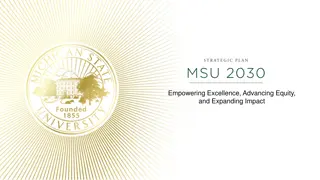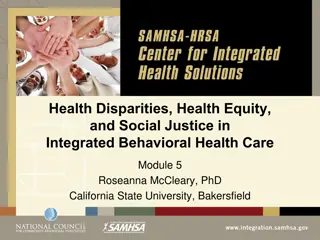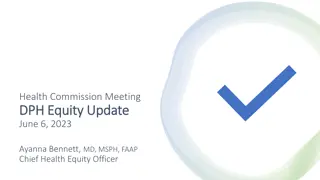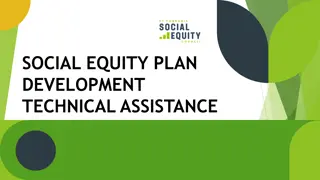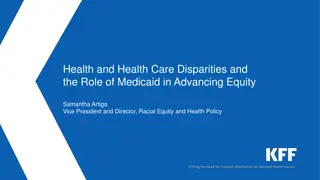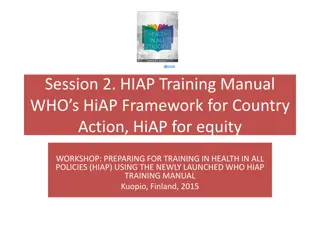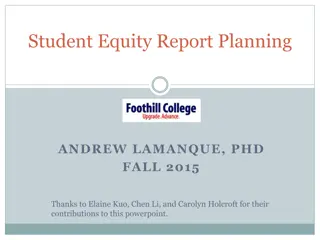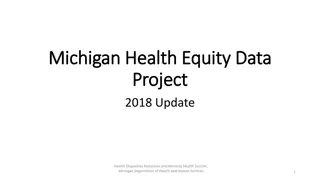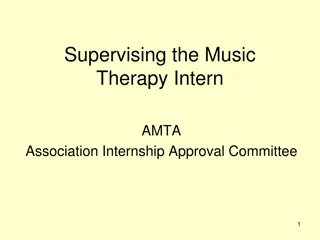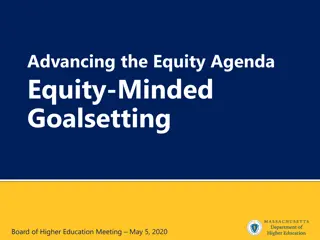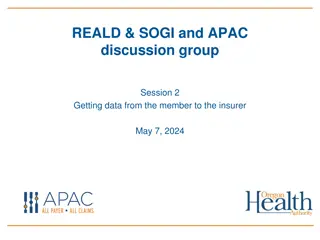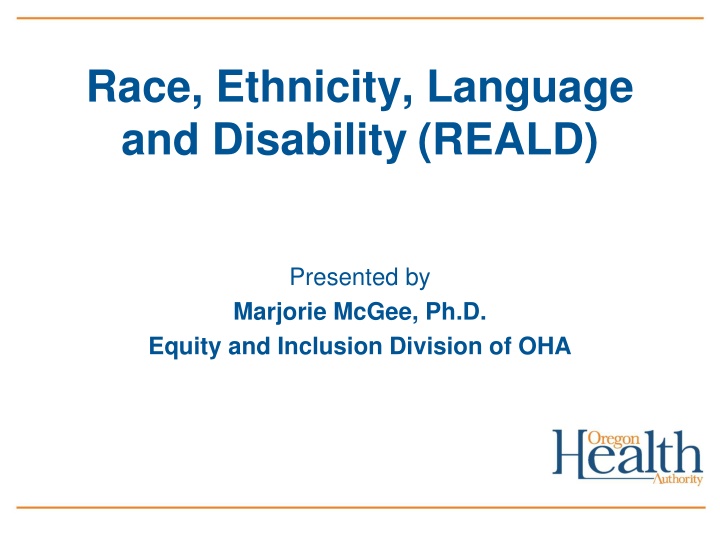
REALD: Race, Ethnicity, Language, and Disability in Health Equity Initiatives
"Explore the concept of REALD - Race, Ethnicity, Language, and Disability - and its significance in health equity efforts. Learn about its objectives, history, standardized data collection questions, and its role in addressing disparities among diverse populations. Delve into the relevance of REALD to health equity metrics, with a focus on disability-related measurements. Discover initiatives and studies highlighting the impact of REALD on health outcomes."
Download Presentation

Please find below an Image/Link to download the presentation.
The content on the website is provided AS IS for your information and personal use only. It may not be sold, licensed, or shared on other websites without obtaining consent from the author. If you encounter any issues during the download, it is possible that the publisher has removed the file from their server.
You are allowed to download the files provided on this website for personal or commercial use, subject to the condition that they are used lawfully. All files are the property of their respective owners.
The content on the website is provided AS IS for your information and personal use only. It may not be sold, licensed, or shared on other websites without obtaining consent from the author.
E N D
Presentation Transcript
Race, Ethnicity, Language and Disability (REALD) Presented by Marjorie McGee, Ph.D. Equity and Inclusion Division of OHA
Objectives Overview, history and purpose of REALD Relevance of REALD to Health Equity Metrics 2
What is REALD? Acronym: Race, Ethnicity, Language and Disability Standardized questions to collect data A tool for uncovering health disparities among diverse populations and subpopulations 3 Race/Ethnicity Questions 6 Language Questions 7 Disability Questions 3
Big Picture 2000: Oregon Governor identifies data collection of race/ethnicity as priority (Racial & Ethnic Health Task Force Final Report) 2011: Department of Health and Human Services (DHHS) establishes data collection standards for race/ethnicity, primary language and disability status (Affordable Care Act, Section 4302) 2013: With leadership from Asian Pacific American Network of Oregon and Oregon Health Equity Alliance, House Bill 2134 signed into law 2013/14: Rulemaking Advisory Committee (RAC) developed REALD standards; OARs 943-070-0000 thru 943-070-007 2015: Funding allocated for REALD standards implementation (OHP/ONE; ICS/OFRA, staffing) 2016: OHA and DHS hire REALD staff 2017: ONE becomes REALD compliant 4
Relevance of REALD to Health Equity Metrics / Measurements Some examples focusing on Disability with respect to two metrics: 1) ED utilization, and 2) Effective contraceptive use 5
Ambulatory Care: ED utilization Study with 400 randomly selected charts (200 deaf ASL users and 200 hearing English speakers) from an outpatient primary care health center with a high volume of deaf patients. Ref: McKee, M. M., Winters, P. C., Sen, A., Zazove, P., & Fiscella, K. (2015). Emergency Department utilization among Deaf American Sign Language users. Disability and Health Journal, 8(4), 573-578. 6
Effective contraceptive use among women at risk of unintended pregnancy Braun, M. (2017). Oregon teens with disabilities: Addressing health and safety needs. CD Summary, 66(10), 1-2. 7
Intercourse Intercourse Before Age 15 Sexual health behaviors among high school students with disabilities. PowerPoint. OHSU. Portland. Horner-Johnson, W., Higgins, T. C., & Braun, M. (2018). 70.0 60.0 50.4 50.0 NO DISABILITY ANY DISABILITY 37.9 40.0 36.1 DEAF 33.7 32.5 30.5 BLIND 29.3 30.0 COGNITIVE 23.9 MOBILITY 20.0 SELF-CARE INDEP. LIVING 10.0 0.0 Yes 8
Condom Use at Last Intercourse Horner-Johnson, W., Higgins, T. C., & Braun, M. (2018). Sexual health behaviors among high school students with disabilities. PowerPoint. OHSU. Portland. 70.0 60.0 48.750.7 50.0 NO DISABILITY ANY DISABILITY DEAF BLIND COGNITIVE MOBILITY SELF-CARE INDEP. LIVING 45.9 44.7 39.1 40.0 36.4 36.3 30.0 25.6 20.0 10.0 0.0 No Condom at Last Intercourse 9

